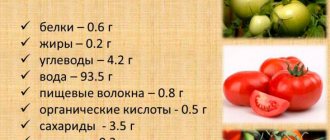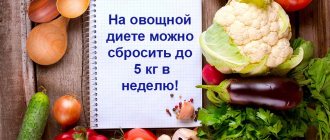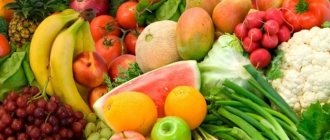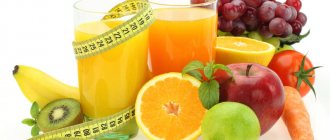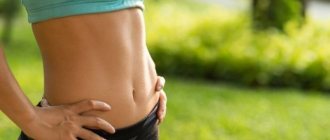Diet food, what is it? What are diet foods and how do they help you lose weight?
Dietary foods are usually called gentle foods. They bring the necessary compounds into the body, but do not create an extra burden on the gastrointestinal tract. This is achieved through:
- Chemical composition. The group of dietary products includes low-calorie foods that contain little fat and fast carbohydrates. At the same time, it should contain enough protein, fiber and vitamins.
- Method of preparation. Culinary techniques that are welcome are boiling (in water, steaming), stewing, baking. Fried foods are prohibited because they always contain more fat, they whet the appetite and irritate the gastric mucosa.
- Eating properly. Meals should be small and regular. Only in this case the body calmly digests food and uses all the calories for good. It is optimal to eat 5-6 times a day in small portions (3 main meals and 2 snacks).
Dietary products are usually prescribed to patients with certain diseases in order to curb their worsening and alleviate the person’s condition. They are recommended after operations or serious illnesses during the recovery period.
But they can be consumed as preventative meals to regulate metabolism and prevent health problems. First of all, this concerns excess weight.
Gentle food is easily digested, with proper nutrition there is no “overkill” in calories, fat is not stored as reserves. Due to slow carbohydrates and protein, this diet is quite filling, and fiber ensures cleansing of toxins from the body.
Salad with grapefruit and chicken
Ingredients:
- 1 grapefruit;
- ½ chicken fillet;
- 1 bunch of spinach (about 25 g);
- 30 g hazelnuts;
- 1 tbsp. l. olive oils;
- 1 tsp. lemon juice;
- salt;
- pepper mixture.
Boil the chicken fillet. Cut into small pieces. Wash the spinach leaves and shake off excess moisture. Place the greens on a plate. Sprinkle meat on top.
Prepare grapefruit:
- To peel.
- Divide into slices and cut each into two parts.
- Remove seeds.
Arrange the citrus slices on top of the spinach and chicken. Split the peeled hazelnut kernels into 2 parts. Scatter over salad plate. Salt and pepper the appetizer. Sprinkle with freshly squeezed lemon juice and drizzle with olive oil. Serve the treat immediately.
Diet is about hygiene. Food hygiene is the basis of human health
Human health can be preserved or restored to some extent if the entire complex of so-called hygienic measures is observed. It includes hygiene of the internal environment of the body, labor and social. In general, the very term “hygiene” was brought into our lives by the ancient Greeks. The goddess with the same name Hygeia was highly revered on Olympus, patronized healers, and brought people healing and knowledge about the nature of diseases. Unfortunately, today we are faced with the fact that the concept itself is being replaced by something else, in other words, it is being devalued.
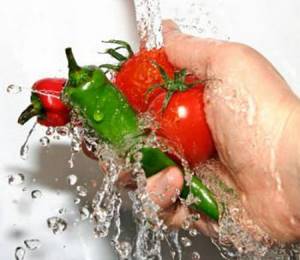
It only includes such simple actions as washing hands, etc. This is wrong. In fact, hygiene is a set of rules, laws and methods that allow the body to provide all the necessary conditions to prevent diseases and maintain health. Food hygiene is one of the areas of this science.
Rules to follow to stay healthy
Sanitation and food hygiene are designed to monitor the condition of eating areas (they, of course, must be clean), and compliance with the rules for the production and storage of food. This is a very serious science. After all, food hygiene is an important component of our life. Compliance with it is mandatory for both adults and children. Violations can lead to gastrointestinal diseases.

Here are the following food hygiene rules that you need to follow to stay healthy:
- Before eating, you need to not only wash your hands yourself, but also handle the food.
- Most foods should be consumed fried, or better yet, boiled.
- Of course, an important place in the diet should be given to raw vegetables and fruits.
- If possible, it is advisable to eat at the same hours, adhering to the daily routine.
- You need to control portions and not eat too much at one time. Overeating is unacceptable.
- It is not advisable to force yourself to eat. Such a lunch (breakfast, dinner) will not bring any benefit.
- When eating, you need to chew the food you eat properly for a long time. Do not rush.
- It is advisable to exclude various distractions: books, TV, etc., and concentrate completely on food.
- Be sure to check the expiration dates of products. They need to be stored in the refrigerator, observing temperature standards.
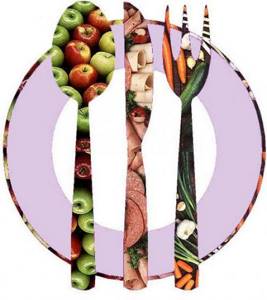
The need to follow a diet
Following these simple rules will help you stay in good shape and avoid a number of diseases. Food hygiene also includes such an area as diet. It deals with the issues of complete rational consumption and assimilation of food by a person, depending on his individual characteristics (gender, age group, profession, geographical living conditions, etc.). But there are also general recommendations related to diet that must be followed by everyone without exception. For example, dinner should be no later than 2 hours before bedtime. After all, if the stomach is full, it begins to put pressure on the diaphragm, which can cause disruption of the heart, restless sleep, and nightmares. Or here’s another rule: it is necessary that the food consumed is not too hot or cold, but only warm, close to the temperature of the body itself. It is harmful to eat a lot or often. The most correct interval between meals is three to four hours.
Broccoli and cauliflower salad
Ingredients:
- 1 head of broccoli;
- 1/2 head of cauliflower;
- 90 ml low-fat sour cream;
- a few sprigs of fresh parsley;
- salt.
Divide two types of cabbage into “umbrellas”. Boil them in separate pans in salted water. Cook broccoli for 6 – 7 minutes. Cauliflower – 10 – 12 minutes.
Prepare the dressing:
- Finely chop the fresh parsley.
- Mix it with low-fat sour cream
- Salt the mass.
- Mix all ingredients well.
If the cabbage inflorescences are very large, cut them into two parts. Mix vegetables in a common bowl. Season with sour cream sauce. It’s delicious to try this salad both hot and cold.
Dietary products and dishes. List of the best diet foods for weight loss
Modern beauty standards make the problem of losing weight very relevant today. Every day, hundreds of thousands of people all over the world begin to struggle with extra pounds.
Unfortunately, the rhythm of life of a modern person is such that there is not always free time left to visit fitness clubs and gyms.
In this case, it is very beneficial to lose weight through diets.
What healthy foods help you lose weight?

- Grapefruit. It contains a lot of sodium, which dulls the feeling of hunger and helps you feel full longer. It also contains useful fiber, which normalizes intestinal function.
- Ginger. Like grapefruit, it contains fiber, sodium, magnesium and many other beneficial substances. The principle of action is the same, only it should be taken in the form of a decoction or tea with ginger infusion.
- Celery. Scientists have found that celery has negative calories. This means that when consuming this product, you spend more calories chewing and digesting than you take in. The feeling of fullness does not last long, but there are no extra calories left.
- Cabbage. Regular and seaweed are very useful for weight loss. They contain extremely few calories, but allow you to maintain a feeling of fullness for a long time. It is also worth considering that seaweed contains iodine, which helps normalize the functioning of the endocrine system, which, in turn, when working properly, eliminates the risk of developing obesity.
- Parsley and nettle. They do not contain calories, improve digestion, speed up metabolism, and promote fat burning.
- Low-fat kefir. Very useful, especially if consumed an hour and a half before bedtime. Normalizes the activity of the gastrointestinal tract, helps cleanse the body of harmful substances as a whole.
Salad "Neptune"
Ingredients:
- 220 g large shrimp;
- 220 g squid;
- 220 g mussels;
- 80 g red caviar;
- 2 tbsp. l. classic soy sauce;
- 2 tbsp. l. low-fat sour cream;
- fine salt.
If necessary, defrost the squid at room temperature. Scald with boiling water. Remove the film that has become clearly visible. Remove all entrails and chord. Pour clean cold water, add salt, bring to a boil and turn off immediately. Remove the seafood with a slotted spoon, cool and cut into thin rings.
Place raw shrimp in boiling water and cook for 3.5 - 4 minutes after boiling again. Clean the prepared seafood from all excess, cut into 2-3 parts.
Place frozen mussels in a well-heated frying pan. After a couple of minutes, add soy sauce. Wait until all the liquid has evaporated from the pan. Remove seafood from heat and cool.
Mix all prepared ingredients. Add low-fat sour cream. Mix the salad and place into portioned bowls. Distribute red caviar on top.
The purpose of dietary nutrition. Principles of therapeutic nutrition
Most diseases develop against the background of prolonged disordered eating. The “wrong” food is low in vital vitamins and minerals, contains sugars, saturated fats and chemical additives. Over time, poor nutrition inevitably leads to disruption of metabolic processes, slagging, acidification of the body and salt deposition, and, as a result, to the development of serious diseases.
Attention! An individually selected diet is the basis for the treatment of pathologies caused by poor nutrition.
The therapeutic diet ensures that the body receives all the necessary substances and supplies the body with energy for normal functioning. Therapeutic nutrition naturally restores the disturbed balance in the body, normalizes the functioning of affected organs and systems, and cleanses the body of accumulated toxic compounds and toxins.
Basic principles of diet therapy:
- Complete provision of the body with all necessary substances. The doctor prepares the diet in such a way that the nutrition fully covers the body’s need for vitamins and minerals, nutrients and energy. The energy value of the diet, as well as the balance of proteins, fats and carbohydrates are calculated individually.
- Correspondence of the chemical composition of products to the functional state of the patient’s digestive system. The diet should consist only of those foods that the patient’s body is able to fully digest and assimilate. Conversely, foods for which the patient’s gastrointestinal tract does not have enough enzymes to digest are excluded from the diet.
- Compliance with diet. The diet involves determining the number of meals per day, the duration between meals, as well as the quantitative and qualitative distribution of the diet during the day. The diet excludes methods of cooking food that are harmful to a particular patient.
- Reducing the load on the gastrointestinal tract. The diet is composed in such a way as to exclude factors of thermal, chemical and mechanical irritation of the affected organs of the digestive tract.
Broccoli fritters
Ingredients:
- 550 g cabbage inflorescences;
- 1 chicken egg;
- 4 tbsp. l. low-fat milk;
- 5 – 6 tbsp. l. sifted flour;
- 1 pinch of ground pepper;
- 8 g baking powder;
- vegetable oil.
Place cabbage florets in boiling water. Cook for 3 – 3.5 minutes after boiling again. Drain the water and cool the broccoli.
Place the cabbage in a blender bowl. Grind until smooth puree. Add milk, salt, pepper to the mixture. Pour out the contents of the raw egg. Add all the flour into the dough in small portions. The latter may require a little more.
Pour baking powder into the dough. After stirring again, leave it for a quarter of an hour. Pour the pancakes with a spoon into a frying pan with a small amount of heated vegetable oil. Fry on both sides until golden brown. Serve for breakfast with low-fat sour cream.
Green beans in tomato as a side dish
Ingredients:
- 430 g frozen green beans;
- 3 tbsp. l. tomato paste;
- 450 g tomatoes in their own juice;
- 1 tsp. Italian herbs;
- 220 g Feta cheese;
- 2 tbsp. l. olive oil;
- 1 onion;
- 3 – 4 garlic cloves;
- salt;
- fresh greens.
Fry chopped onion and garlic in a small amount of oil. Add salt. Add frozen beans to the pan. Fry the ingredients together for 3 – 4 minutes. Add tomato paste. Continue frying for a couple more minutes.
Place the canned tomatoes along with the liquid in a container. Bring the mixture to a boil. Season with salt and Italian herbs.
Reduce the heat under the frying pan to minimum and simmer its contents for a quarter of an hour. Turn off the heat on the stove. Add small pieces of cheese to the treat. Garnish with fresh herbs. Serve with dietary meat.
